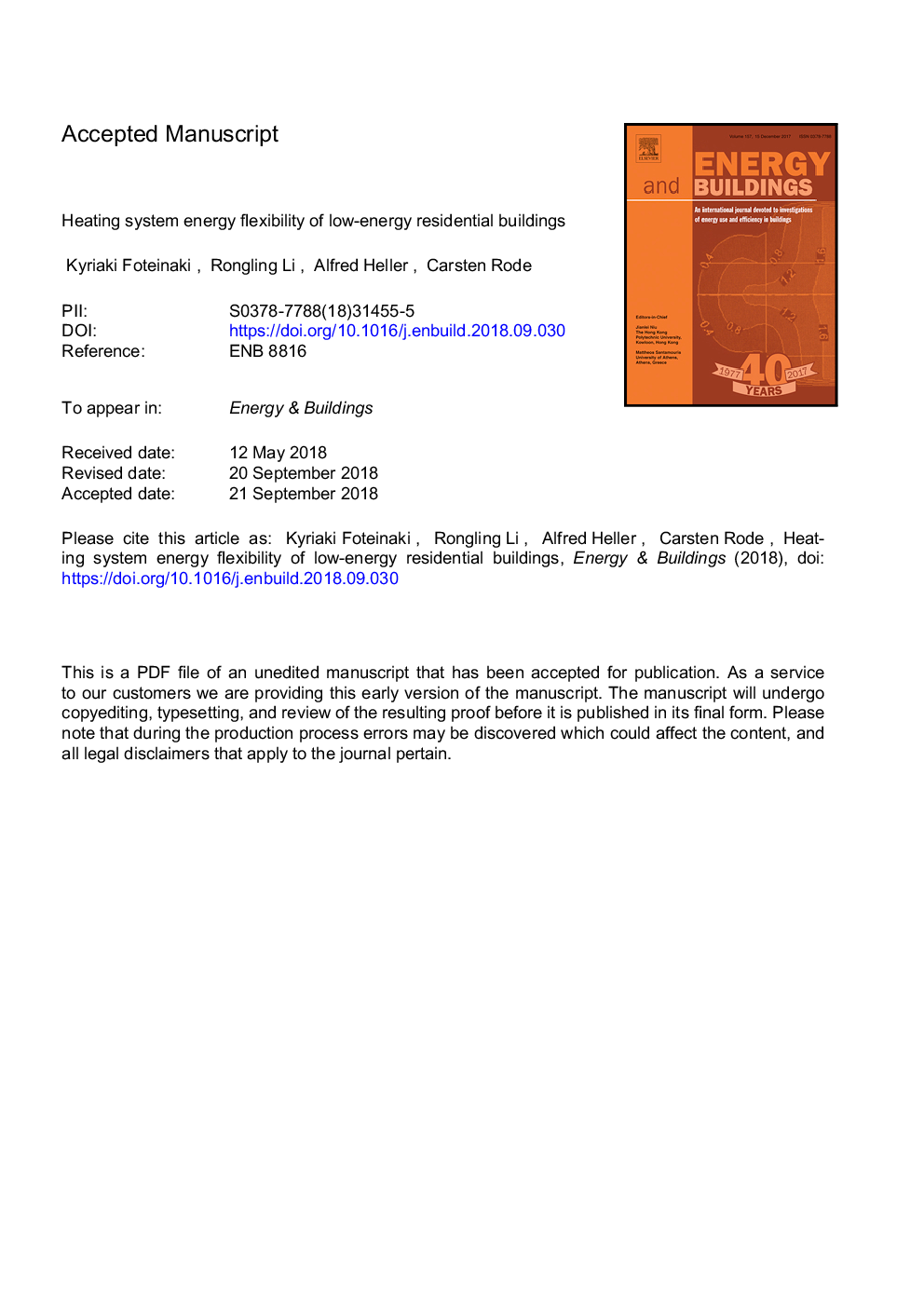| کد مقاله | کد نشریه | سال انتشار | مقاله انگلیسی | نسخه تمام متن |
|---|---|---|---|---|
| 11012598 | 1798145 | 2018 | 30 صفحه PDF | دانلود رایگان |
عنوان انگلیسی مقاله ISI
Heating system energy flexibility of low-energy residential buildings
ترجمه فارسی عنوان
انعطاف پذیری انرژی سیستم گرمایشی ساختمان های مسکونی کم انرژی
دانلود مقاله + سفارش ترجمه
دانلود مقاله ISI انگلیسی
رایگان برای ایرانیان
کلمات کلیدی
انعطاف پذیری انرژی توده حرارتی ساختمان، ذخیره انرژی حرارتی، ساختمان کم انرژی، پاسخ تقاضا،
ترجمه چکیده
انعطاف پذیری انرژی به عنوان یک راه حل مقرون به صرفه پیشنهاد شده است که تسهیل عملیات ایمن سیستم انرژی را در هنگام ادغام سهم بزرگی از انرژی های تجدید پذیر ارائه می دهد. با مقررات سختگیرانه ساختمان در دانمارک، ساختمان های تازه ساخته شده ساختمان های کم انرژی هستند. برای شناسایی نقش ساختمان های کم انرژی در سیستم انرژی، ما توانایی فیزیکی انعطاف پذیری را مورد بررسی قرار دادیم و ظرفیت ذخیره سازی حرارتی موجود ذاتا در توده ساختاری را تحلیل کردیم. دو نوع ساختمان مورد مطالعه قرار گرفت: خانه تک خانه و بلوک آپارتمان. هدف این است که انرژی را اندازه گیری کنید که می توانید از هر ساختمان در یک دوره زمانی به آن اضافه کنید یا آن را کاهش دهید بدون اینکه به راحتی حرارتی آسیب برساند. سناریوهای مختلف (زمان شروع و مدت زمان)، ویژگی های طراحی ساختمان و شرایط مرزی مورد مطالعه قرار گرفت. یافته های این تحقیق نشان می دهد که ساختمان های کم انرژی بسیار قوی هستند و می توانند برای چندین ساعت مستقل باشند. اگر چه برای ساختمان های فردی انرژی موجود برای محدود کردن محدود است، اما اگر ساختمان های بسیاری جمع شده، انعطاف پذیری انرژی قابل ملاحظه باشد. پتانسیل ذخیره سازی در جرم حرارتی قابل توجه است. این تحلیلی، وابستگی بالقوه پتانسیل انعطاف پذیری را در شرایط مرزی (درجه حرارت محیط، تابش خورشیدی، دستاوردهای داخلی) نشان داد و اهمیت پوشش عایق بندی را تأیید کرد. راندمان حرارت منجر به انعطاف پذیری می شود، در حالی که توده حرارتی دیوار دارای نفوذ ثانویه است.
موضوعات مرتبط
مهندسی و علوم پایه
مهندسی انرژی
انرژی های تجدید پذیر، توسعه پایدار و محیط زیست
چکیده انگلیسی
Energy flexibility is proposed as a cost-effective solution facilitating secure operation of the energy system while integrating large share of renewables. With strict building regulations in Denmark, newly built buildings are low-energy buildings. In order to identify the role of low-energy buildings in the energy system, we investigated the physical potential for flexibility and analysed the thermal storage capacity existing inherently in the structural mass. Two building types were studied: single-family house and apartment block. The aim is to quantify the energy that can be added to or curtailed from each building during a time period without compromising thermal comfort. Different scenarios (starting time and duration), building design characteristics and boundary conditions were studied. The findings showed that low-energy buildings are highly robust and can remain autonomous for several hours. Although for individual buildings the available energy for curtailment is limited, if many buildings are aggregated energy flexibility becomes significant. The potential for storage in the thermal mass is considerable. The analysis presented high dependence of flexibility potential on boundary conditions (ambient temperature, solar radiation, internal gains) and underlined the importance of envelope insulation. Heat losses govern the potential for flexibility, while the walls' thermal mass has a secondary influence.
ناشر
Database: Elsevier - ScienceDirect (ساینس دایرکت)
Journal: Energy and Buildings - Volume 180, 1 December 2018, Pages 95-108
Journal: Energy and Buildings - Volume 180, 1 December 2018, Pages 95-108
نویسندگان
Kyriaki Foteinaki, Li Rongling, Alfred Heller, Carsten Rode,
